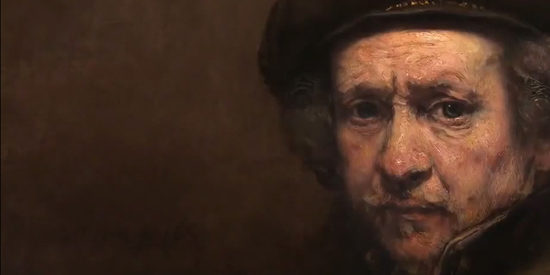
Rembrandt at the National Gallery (Matthew Barrett)
When I have time to explore London, I very much enjoy the National Gallery. There are many treasures at the Gallery, but I especially enjoy those paintings by Rembrandt. Below is a recently published video where an expert walks you through Rembrandt’s self-portrait. I’ve included some of the narrative on Rembrandt’s life from the NG website as well.
Rembrandt Harmenszoon van Rijn was born in Leiden in the Netherlands in 1606. His father was a miller, comfortably off and able to send Rembrandt to the town’s Latin School. At the age of 14, Rembrandt began studying at the famous University of Leiden (unusual for a miller’s son), but academic life did not suit him. After a few months he left to begin an apprenticeship as a painter.
Leiden did not offer much in the way of artistic talent, and in 1624, after three years with a local painter, Rembrandt went to Amsterdam to study briefly with Pieter Lastman. He then moved back to Leiden and set up as an independent painter, sharing a workshop with Jan Lievens. It was not an easy climate in which to work. Following the Protestant Reformation, the local churches no longer provided artists with any commissions as the Catholic church did in other countries. As a consequence artists had to concentrate on commissions from private individuals. Rembrandt quickly began to make a name for himself as a painter of historical subjects.
Unusually, Rembrandt did not follow the advice that was given to young painters, namely to travel to Italy to study Italian art first hand. Instead he felt that he could learn everything he needed to from the art available in his native country.
In around 1631, Rembrandt moved to Amsterdam, the most prosperous port in northern Europe, and ‘crowded with merchants from every nation’. It offered a young and successful artist far more opportunities than sleepy Leiden.
Rembrandt lodged in the house of an art dealer called Hendrick van Uylenburgh, and while there, he met his landlord’s young cousin Saskia. They were married in 1634. The numerous paintings and drawings of her suggest the two were very happily married. In 1636, Saskia gave birth to their first son, Rumbartus. He died after only two weeks. Over the next four years two more children were born, but died within a couple of months.
Professionally, Rembrandt went from strength to strength. The most important families and organisations in the city commissioned paintings. As well as portraits, he produced baroque history paintings such as ‘Belshazzar’s Feast’. Cash flow was sometimes a problem – and Rembrandt’s cash flowed rather freely. He was a compulsive buyer of art, and a collector of all manner of antiquities, props, and weapons to be used in paintings. Saskia’s family accused him of squandering her fortune. But Rembrandt was the most famous artist in the city. What could go wrong?
…read the rest on the NG website
Matthew Barrett is Tutor of Systematic Theology and Church History at Oak Hill Theological College in London, as well as the founder and executive editor of Credo Magazine. He is the author of several books, including Salvation by Grace, Owen on the Christian Life, God’s Word Alone: The Authority of Scripture, and Reformation Theology. Currently he is the series editor of The 5 Solas Series with Zondervan. You can read more about Barrett at matthewmbarrett.com.
